This July, we’re taking a trip back in time to review the sixth season of The X-Files and the third (and final) season of Millennium.
In many ways, Drive feels like an episode that tackles the move to California head-on.
After all, the plot of Drive essentially finds Mulder trapped in a car heading westwards through Nevada and into California. The episode even lingers on a “welcome to California” sign, tacitly acknowledging the massive change that had taken place behind the scenes between the fifth and sixth seasons of The X-Files. It is a very clever way of addressing a major change to the production of the show, one that is candid and open about the fact that things are inherently different now.
More than that, Drive figures out how to build an episode of The X-Files around the change in production location. The sixth season often finds the production team struggling to find the right tone and mood to match the new location; after all, the show cannot simply pretend that it is still filming in Vancouver. California is sunnier, hotter and drier than Vancouver ever was – the sixth season of The X-Files spends a little time trying to adapt to those new filming conditions.
This challenge is arguably most obvious in the string of (literally and metaphorically) lighter episodes in the first stretch of the season. The sixth season is quite controversial among fans of the show because there is a period of time where it seems like The X-Files might transform itself into a quirky romantic sit-com. Episodes like Triangle, Dreamland I, Dreamland II, How the Ghosts Stole Christmas and The Rain King would be the lighter episodes of any previous season; they seem to pile in on top of one another at the start of the sixth season.
In contrast, Drive is very much a quintessential episode of The X-Files. It is a classic episode of the show. It is scary, it is tense, it is meticulously constructed. There is humour to be found, but the stakes feel real and personal. Writer Vince Gilligan very shrewdly plays into the constraints of the new Los Angeles production realities. A lot of Drive takes place during the day on long desert roads. It takes advantage of California’s impressive interstate system, with twenty-five highways covering almost two-and-half thousand miles.
However, Drive is more than simply a demonstration that The X-Files can still work in its new home. Drive is a superb piece of television in its own right. It is highly regarded as one of the finest episodes of The X-Files from the second half of the run. It is notable for a wonderful premise, a great script, and a mesmerising guest performance from Bryan Cranston. Drive would be the first collaboration between writer Vince Gilligan and actor Bryan Cranston, but not the last.
Drive is a very efficient story. It is an episode that can be effectively summed up in a sentence or two, but which is able to sustain interest over forty-five minutes. It is a premise that just keeps giving – a central idea that provides its own suspense and anxiety. In fact, it feels like Drive would have been able to sustain its narrative momentum across ninety-minutes better than Dreamland; although the week between instalments (or even the closing and opening credits) might have undercut some of the energy that drives the episode forward.
As the title might suggest, Drive is all about pushing forward. It is a script that moves incredibly quickly. The heart of the script is quite simple: Mulder is trapped in a car with a man whose head will explode if the car slows down. However, that basic set-up provides a lot of dramatic potential. Putting two characters in a confined space together under stressful conditions is conducive to great drama. These sorts of situations provide for candour and honesty, allowing tense emotional outbursts and naked vulnerability.
The original premise of Drive was quite different. According to The End and the Beginning, the episode had been pitched by Gilligan as a story about a man with a hostage on a tilt-a-whirl ride. Gilligan had pitched the idea so frequently it was a joke among staff. However, Gilligan had no idea where to take the idea from there:
“What happened next? I had absolutely no idea. So every time I’d mention the tilt-whirl – and it became a running joke in our story meetings – the other guys would say: ‘Where’s the rest of the story? Where’s the X-File here?’ So I finally started joking about it. I said: ‘His head explodes! That’s why he doesn’t want to get of the ride!’ I didn’t mean it seriously, not at all. But at the beginning of the season John Shiban and I were talking about it. We were looking for a story for me to write, and he said: ‘Why don’t you do something with that crazy tilt-a-whirl idea?’ And I began to think about it a little more seriously. Why would someone’s head explode? And the answer, surprisingly, came fairly quickly.”
Naturally, the premise evolved from there. The tilt-a-whirl became a car, allowing for greater mobility and tension. The hostage became Mulder, a very clever way of drawing our two lead characters into the story, and ensuring that the audience was emotionally invested in the stakes of the episode.
One of the more interesting aspects of Vince Gilligan as a writer on staff with The X-Files is his tendency to lean more towards television for inspiration than film. Although Gilligan has claimed that he always wanted to be a movie writer rather than a television writer, he has a deep and abiding love of the medium. After all, Gilligan is the writer who pitched a crossover between The X-Files and Unsolved Mysteries for years before settling for a crossover between The X-Files and Cops during the seventh season.
Most of Gilligan’s colleagues tend to look at classic cinema as a reference. Chris Carter’s work on The Post-Modern Prometheus was heavily influenced by films as diverse as James Whale’s Frankenstein and Paul Brickman’s Risky Business. John Shiban’s script for The Pine Bluff Variant was an obvious homage to seventies conspiracy thrillers. Even the alien creature from The X-Files: Fight the Future and The Beginning was influenced by the creature from the movie Alien. In contrast, Gilligan is more likely to exploit the show’s home medium.
Even the opening sequence of Drive is structured in such a way as to take advantage of the television format. The teaser opens with an announcement that seems to come from the Fox news department. “We interrupt this program for a breaking news bulletin,” a voice-over informs the viewer, creating the impression that the Sunday broadcast of The X-Files has been preempted by coverage of a national news story. Although the illusion is shattered as the teaser begins feeding the viewer shots that couldn’t be coming from media coverage of a car chase, it is an effective opening.
The footage is obvious designed to evoke the infamous O.J. Simpson car chase that took place on 17th June 1994. The coverage of the car chase lasted about two hours and began at 9pm, just in time to interrupt prime-time television. The chase was a national television spectacle, with Dominos Pizza recording record sales during the event. The use of that iconography and imagery in the teaser is a very clever and conscious exploitation of television as a medium. As with X-Cops, it is something the would not work nearly as well in any other format.
So it should be no surprise that a fairly significant influence on Drive came from one of Gilligan’s favourite television shows. Most commentators looking at Drive will see the reference to the movie Speed, but Gilligan has conceded another inspiration in how he framed the episode:
I admit that I kinda was ripping off – in an homage-y way – for inspiration, I was borrowing liberally from two things. I was borrowing from the movie Speed. And I was borrowing from a fantastic episode of television – this was a great show, speaking of great shows – of Homicide: Life on the Street. There was an amazing episode in which Vincent D’Onofrio gets pushed in front of a subway train in Baltimore and he gets caught between the train car and the track… or whatever the hell it was. He gets crushed. As soon as they pull the train off him, they know he’s going to die. He’s going to go into seizure, he’s going to die. So, basically, they’re trying to… the cops are trying to find this character’s wife so he can say goodbye. Except the brilliant thing they did in this episode – the thing that stuck with me – is that the guy’s an asshole. The guy really is unpleasant. And yet, at the end, you still have bonded with him and you still feel sorry for him when they pull the train… You realise he’s not just unpleasant because he’s got a train on him, you realise he was that guy always. And yet you still feel his humanity, and you still feel for him, and you still feel sorry for him.
It makes sense that Gilligan would draw from Homicide: Life on the Street. Not only was it a hugely acclaimed piece of drama, but Gilligan was an avowed fan of the show. He even wrote the character of Detective John Munch into his fifth season script for Unusual Suspects.
The episode Gilligan is describing is Subway, the sixth episode of the penultimate season of Homicide. The episode is rightly considered a classic of contemporary television. The episode was written by James Yoshimura. In the PBS documentary about the production of Subway, Clark Johnson described Yoshimura as “a tortured writer. He’s the reincarnation of Dylan Thomas, I think, because he’s tortured when he writes.” The episode was directed by Gary Fleder, the director of feature films like Things to do in Denver When You’re Dead and Kiss the Girls.
Subway was broadcast in December 1997, and arrived to universal acclaim. The script won a Peabody Award, and was nominated for two Emmy awards. James Yoshimura received the first of his two Emmy nominations for scripting Subway, and Vincent D’Onofrio received an Emmy nomination for his guest performance as John Lange. The episode was the focus of the PBS documentary Anatomy of a Homicide: Life on the Street, which broadcast in November 1998 – the same month as Drive.
Although Bryan Cranston was not recognised with an Emmy nomination, Patrick Crump is just as essential to the success of Drive. Although there is a substantial subplot following Scully’s investigations into the strange phenomenon, the bulk of Drive is effectively a two-hander between Mulder and Crump as they embark upon a crazy road trip that will take them all the way to the Pacific Ocean. David Duchovny is great as Mulder, but Drive simply would not work without an incredible guest performance.
Bryan Cranston kicks off what turns out to be a fairly strong season for guest actors. The sixth season of The X-Files would feature superb guest performances from actors as diverse as Michael McKean, Edward Asner, Lily Tomlin, Bruce Campbell and Jesse L. Martin. Even weaker instalments would be buoyed by great guest work by actors like John Hawkes and Andrew G. Robinson. The move to Los Angeles might have been a mixed blessing, but it did seem to open up all sorts of casting opportunities.
According to Cranston, he ended up on The X-Files almost by sheer coincidence. He happened to be available (and broke) at a time when the show was casting the role. The rest is history:
I was doing a movie I wrote and directed, and just took a flier. I put all my money in it, and I went out with my wife and we made this little movie, and we postponed it three, four times. I came back [to LA] to finish it, was in town for three days, and my agent called me. “There’s a role on X-Files. Would you be interested?” “Well, yeah, I’m broke, I need the money.” And I got it. It was written by Vince Gilligan. That’s where I met him. Had I not been available, I wouldn’t be sat in this chair right now. I know that. It’s good, because it frees me up to realize there’s no point in worrying about things: you’re going to get to the place you’re supposed to go to. Vince was my champion to get this role: I will forever be grateful to him.
It is quite a remarkable piece of luck. If Bryan Cranston had not been in that particular situation at that particular moment, things might have gone very differently. Would he still have found the role of Walter White?
Discussing Vince Gilligan in the context of The X-Files is always somewhat difficult. More than any other writer on the show, Vince Gilligan’s greatest successes lie ahead of him. His work on The X-Files is consistently brilliant and highlight of the show, but he would a grow a great deal in the years after the end of The X-Files. Gilligan would go on to create a show that is frequently cited as one of the (if not “the”) best television shows of all time. His work is often mentioned in hyperbolic discussions about “the new golden age of television” or some such.
Gilligan is not the only successful writer to emerge from The X-Files. Howard Gordon enjoyed a long and successful career on shows like 24 or Homeland. Glen Morgan and James Wong launched the Final Destination film series. Even producers and writers like Frank Spotnitz and John Shiban are rarely out of work, their names frequently attached to high-profile projects. At the same time, Gilligan’s later work exerts a strange gravity over his writing on The X-Files. It is hard not to look for pieces of Breaking Bad in his earliest scripts.
Any writer has favourite themes and ideas, motifs and techniques. Howard Gordon’s strengths tended toward tense thrillers like F. Emasculata or Nisei or Zero Sum, in a way that seemed like an audition for 24 or Homeland. Glen Morgan and James Wong repeatedly demonstrated a strong affection for pulpy storytelling in their work, building towards their later feature film projects. Vince Gilligan’s early X-Files scripts (Pusher, Unruhe, Paper Hearts, Small Potatoes, Unusual Suspects) betray a fascination with little men who wish that they were big.
Despite the collaboration between Vince Gilligan and Bryan Cranston, the thematic links between Drive and Breaking Bad are not so overt. Drive is not as obvious a forerunner to Breaking Bad as something like Pusher or Small Potatoes. Instead, Drive is proof that Vince Gilligan is very good at rendering the audience sympathetic to horrible human beings and that Bryan Cranston is very good at bringing out the humanity in characters who might otherwise be difficult to care about.
It was this collaboration that earned Bryan Cranston his place on Breaking Bad. When the network executives were uncomfortable with the idea of casting Bryan Cranston as Walter White, Gilligan simply showed them the episode:
As the show’s creator, Vince Gilligan, tells it, “There was concern originally: ‘This is the father from Malcolm in the Middle, which is night and day from Breaking Bad. Why do you think this is the guy?’ ” A longtime X-Files producer and writer, Gilligan had cast Cranston as a menacing racist in a 1998 X-Files episode. “We needed a guy who could be scary and kind of loathsome but at the same time had a deep, resounding humanity. When Malcolm went on the air, I was like, ‘Oh my God, I didn’t realize he could be so funny!’ ” To convince AMC, Gilligan distributed copies of Cranston’s X-Files appearance: “That was all it took.”
As such, Drive is very much a direct ancestor of Breaking Bad. Had this episode of television not turned out exactly in this way, the modern television landscape would be radically different.
That said, there are subtle thematic connections between Drive and Breaking Bad. Patrick Crump might not foreshadow Walter White in the same way that Robert Patrick Modell or Eddie Van Blundht does, but the episode hits on some ideas central to Breaking Bad. Evaluating the legacy of Breaking Bad, critic John Doyle suggested that the series was “a savage attack on American capitalism.” Michael Paarlberg described it as “a truly American TV show” in its examination of the gap between economic reality and self-mythologising.
In interviews, Gilligan is normally quite reserved on the matter of his politics. As Breaking Bad came to an end in 2013, he told Vulture, “I’m not real comfortable talking about politics. I’m probably more conservative than most folks in the business.” At the same time, there is a recurring frustration with certain aspects of American capitalism. Breaking Bad suggests that Walter White is motivated to horrible actions as much by a sense of selfish entitlement as by the diagnosis of his cancer. Walter White believes that the world owes him more than it has given.
It is no surprise that Breaking Bad borrows so heavily from the iconography of the classic western. There were lots of moody stand-offs in the desert and plenty of buried loot. There is a recurring focus on New Mexico’s Native American population, reflecting how their lives have been affected by the European settlers. The final season episode Dead Freight even features a train robbery, that old western standard. Writer and director George Mastras described the trench hiding Walt and Jesse (and Todd) as “an iconic piece of western imagery.”
In an interview towards the end of the show, Gilligan acknowledged that Breaking Bad could be seen as “a contemporary western.” The western is a genre steeped in the imagery and history of American capitalism. It is the mythology of the expansion westward – the taming of a continent by the European settlers. The X-Files itself had long been interested in the metaphors associated with the western. Mulder gets buried alive in a train car on a Native American reservation in Anasazi before he gets to stage his own attempted train robbery in Nisei and 731.
Gilligan’s script for Drive capitalises on the show’s decision to move to California, to create a rather potent metaphor. The beautifully staged shots of the open desert cannot help but evoke the classic western aesthetic. Drive would not work nearly as well in the show’s previous home in Vancouver. Over the course of the episode, Mulder and Crump find themselves fugitives fleeing law enforcement across state lines. In fact, Crump is introduced to Mulder as a gun-weilding outlaw who has just mounted an impromptu jailbreak.
As Drive goes on, Mulder and Crump find themselves pressing westward in search of hope and survival. They move from east to west, mirroring the migration patterns of the European settlers who swept across the country. They push closer and close to the wide open space of the Pacific Ocean, a wide open space that means no more land and no more room for expansion. In many ways, Drive plays as a literal representation of “Manifest Destiny”, the doctrine that guided the European settlers across the North American landscape.
Mulder and Crump face a biological imperative: go west or die. Mulder writes to Scully, “Must head west to keep alive.” This evokes some of the historical motivations for westward expansion. As William W. Freehling notes in The Reintegration of American History, southern slaveowners adopted an “expand or die” rhetoric in defense of Manifest Destiny:
Here, in prestine form, was slaveholding agrarians’ expand-or-perish argument. Unless slavery could spread into new areas, the slaveholders’ depressed economy would collapse and the south’s racial order would dissolve. Add to this formula for disaster the possibility that english abolitionists in Texas, right across the Louisiana-Arkansas border, would incited blacks to flee or to pillage or worse. This logic then yielded a clear choice: increase the number of southern congressional seats and double the Lower South’s land by adding Texas to the Union or expect a racial inferno.
Drive never gets too heavy-handed, but its central metaphors are quite clear. Like Gilligan’s script for Folie à Deux towards the end of the fifth season, Drive plays as a critique and condemnation of certain aspects of American capitalism. The episode treats the journey west as a metaphor for certain facets of the American experience, clever use of powerful iconography.
Drive suggests that the strange experiments conducted by the United States government have left Patrick Crump compelled to move westward. He literally cannot stop, or he will die. “Is this what happened to your wife?” Mulder asks. “This same thing? If you stop moving, you die?” That is arguably an accurate summary of day-to-day living in a highly capitalist society; you keep moving, don’t stop. In Capitalism, Socialism and Democracy, Joseph Schumpeter suggested that liberal capitalism “not only never is but never can be stationary.”
Mobility is at the very heart of capitalism and the American Dream. There is something romantic in the idea that anybody can arrive in America and find their own unique space. You can start at the bottom and climb all the way to the top – at least according to the mythology. Drive even acknowledges this in sly little in-jokes. When Mulder and Crump hijack a car at a pumping station, the camera pans over to let us read the bumper sticker. “I may be slow, but I’m ahead of you.” That is perhaps closer to the reality than the romance of “rags to riches.”
It is worth noting that Patrick Crump’s difficulties begin on a morning when he is unable to go to work. Patrick is a “forty-year-old roofer. No history of mental illness. No prior record.” He lives in a trailer park with his wife. It seems unlikely that his family enjoys a lot of economic security. So it seems appropriate that this nightmare is a result of the fact that he is unable to go to work on one rainy morning. “You woke up this morning but you didn’t go to work,” Mulder asks. “Why?” Crump explains, “It was raining. You don’t shingle in the rain.”
It is perhaps telling that the deaths in Drive are not the result of a viral contagion or a bacterial plague, but of something a lot more abstract. (That said, there is a nice reference to the biblical plague from The Time is Now when Scully finds a dead bird in a cage and hosts of dead birds by the transistor.) Gilligan is quite fond of supernatural threats that resemble disease or infection, even as they remain distinct. All the deaths in X-Cops are the result of a viral idea – fear that infects and spreads, passing from person to person.

With this, the sixth season of The X-Files is more firmly connected to the second season of Millennium than the third season of Millennium is.
Drive does not go quite that far. Vicky and Patrick Crump are not murdered by an infectious fear. Instead, all the deaths in Drive are the result of sound waves. “What if what we’re looking for is some kind of a sound?” Scully wonders, drawing a confused reaction from the staff assigned to assist her. There is something interesting in the idea that sounds could have so profound an effect on people. Perhaps it reflects the damaging effect of certain philosophies and ideas that can destroy lives and people.
As with Folie à Deux, Gilligan’s script for Drive offers a less-than-flattering portrayal of working life. In a rather telling cut, the final act transitions from the heartbreaking death of Patrick Crump to Assistant Director Kersh complaining about the expenses that Mulder and Scully racked up on their adventure. It seems that a human life can be measured against a financial bottom line. And it is surprisingly cheap. “Why don’t you bill me?” Mulder bitterly asks, making it clear that he does not subscribe to Kersh’s moral and economic philosophy.
In Folie à Deux, Garry Lambert was driven insane by a soul-destroying telemarketing job. In Drive, it seems that Mulder is facing a similar existential crisis. It is telling that he removes his tie as he walks away from the car at the end of the episode to stare out at the ocean. The tie is an essential part of the business suit, “the uniform of capitalism.” Cynics suggest that the tie is a metaphorical noose, with one rhyme observing, “Daily the modern man endures this civilised abuse, to place a blade against his throat and his head inside a noose.”
Drive suggests that Mulder himself is being worn down by the mundane reality of ordinary working life. Mulder talks about their current assignment being “humiliating”, but he glosses over the fact that somebody somewhere would have to do it. The final scene of Drive makes this working pressure all the more explicit. “So are we done here?” Mulder demands. “Back to the bozo work investigating huge piles of manure?” Kersh calmly and coldly responds, “You can always quit.”
In The Beginning, the Cigarette-Smoking Man suggested that the real goal here was to break Mulder’s spirit. In Drive, Gilligan suggests that the daily grind might just do that. In light of all this, the emphasis on California in Drive seems beautifully ironic. After all, California is often presented as the epitome of the American Dream. As Anthony Tarquinto noted in The Real 40 Year Old Virgin:
The United States is the apex of western culture, and you can’t get anymore west than California. ‘Manifest Destiny’ inspired many to pull up roots in the east and take a chance. ‘Go West Young Man’ was the order of the day. California became the final frontier. What a remarkable coincidence that it was so beautiful and temperate. Through the Gold Rush, railroads, industrialisation and modernisation, California set the world standard for progress. ‘California Dreaming’ created the mythical lore. California is the nexus of American ingenuity, creativity, innovation, passion, desire, grit and determination. California is the embodiment of the American Dream.
California has always called out to the dreamers and the optimists. It is no coincidence that the Summer of Love unfolded in San Francisco. The lure of Hollywood holds an incredible attraction to people. Although David Duchovny forced the move from Vancouver to Los Angeles to spend more time with his wife, it is worth wondering whether he also felt the pull of Hollywood on his career – driving him onwards.
However, Drive brutally subverts this romantic ideal of California. California is not a place of limitless opportunity for Mulder and Crump. It literally represents the end of the road for their joint adventure. The sign welcoming the duo to California is met with dread. “We’ll figure this out,” Mulder promises his desperate passenger. As he catches a glimpse of the sign ahead, Crump simply replies, “You’d better figure quick. We’re running out of west.” It is a powerful image.
The ending of Drive is incredibly bleak. Mulder and Crump keep on driving, but they never make it. The car simply cannot travel fast enough to keep Crump alive. Broken and disillusioned, Mulder drives right up to the Pacific Ocean. He gets out of the car and walks to the edge of the shore so that he can stare out at the sea. The Pacific Ocean was named for its calm tranquility, and is by far the largest of the world’s ocean basins. It is practically limitless in scope. It represents an infinite freedom that Mulder and Crump can never enjoy, because the west ends right before it.
It is worth remembering that California was not always an ideal to strive towards. In fact, Drive seems to hark back to the discovery of the region by Spanish explorers. As Neil Bowen Morgan explains in The California Syndrome, those early adventurers found California itself of little interest. They were only really fascinated with California as a gateway to the Pacific:
In 1542 the Spanish explorer Juan Rodriguez Cabrillo sailed into San Diego Harbor and became the first European to touch the soil of the California of today. There was no thought of colonization then. Cabrillo was the Columbus of California, seeking a Northwest passage to link the Atlantic and Pacific. This was a time of Spanish glory on the seas and the hunt was for quick riches; nothing in the California shoreline suggested wealth.
Interestingly, Patrick Crump began travelling east in the hope of finding help for his wife. He eventually discovered that the only way of easing her pain was to move west instead. It recalls the old tales about the discovery of America, the stories about how the explorers were primarily interested in trade routes to India, China and Japan. It is a nice story, one that suggests the west was only discovered while in pursuit of the east.
Drive consciously and repeatedly mirrors Mulder and Crump. Although Crump is a bitter anti-Semite, he is not too far removed from Mulder. As Drive illustrates, Mulder can be just as snarky and confrontational. When Crump asks what Mulder is doing at one point, Mulder replies with sarcasm. “What am I doing?” he repeats. “I’m composing a sonnet. I’m slowing down for a light.” When Crump insists that Mulder address him as “Mister Crump”, Mulder replies, “I can think of something else I’d like to call you. I could put ‘mister’ in front of that too, if you’d like.”
However, the similarities between the two characters run a lot deeper. Patrick Crump is just as paranoid and cynical as Mulder. He pointedly blames a government conspiracy for what happened to his wife. “You think I don’t know, huh?” he taunts. “You think I’m just some ignorant pudknocker, don’t you? But I get it, man! I see what this is! I am not sick and I do not have the flu. Vicky and me were just some kind of… government guinea pigs.” It is a paranoid fantasy, but one that resonates with Mulder. He might have proposed something similar.
When Mulder asks if he really believes that the government did this to him, Crump replies, “Hell, yeah. Who else? You see it all the time on the TV: they’re dropping Agent Orange, they’re putting radiation in little retarded kids’ gonads… Oh, yeah. You sons of bitches sneaking around my woods at night… I seen you. You think I don’t know?” Crump’s fantasies – with his references to the “Jew FBI” – have a decidedly racist element to them, mirroring those of many real-life conspiracy theories. However, they are not too far from what Mulder believes.
This adds an extra layer of tragedy to Drive. The script never confirms what happened, but it seems plausible that the official told Scully the truth when he confesses to the “brief power surge” which took place the previous morning. It seems quite likely that Patrick Crump was not the victim of sinister government experimentation. Instead, the death of Patrick and Vicky Crump was nothing more than a freak accident. It was mere happenstance. If Patrick Crump had been out of the house working, or if the surge had not happened, he’d still be alive.
In a way, this plot development harks back to Gilligan’s script for Unusual Suspects. In Unusual Suspects, Gilligan suggested that conspiracy theories were a way of coping with trauma – a means of accounting for the random chaos of the wider world. It is easier to believe that the government was orchestrating a sinister human experiment, because that would mean that somebody was in control. It is much scarier to imagine that all of this horror could result from a freak technical error. It is better to believe that the world can be managed than to acknowledge that it is so arbitrary.
Drive not only touches on several recurring themes in the work of Vince Gilligan, but also connects quite well with some of the core ideas of The X-Files. Although Vancouver is technically a little west of Los Angeles, there is something hugely symbolic in having Mulder drive into California as part of the second episode of the sixth season. it very firmly literalises the changes taking place behind the scenes on the show in the same way that burning the basement in The End was a way to bid farewell to the familiar Vancouver sets.
In Gilligan Unbound, writer Paul A. Cantor suggests that Drive hits on some of the big recurring themes of the show as a whole. In particular, the way that Crump and Mulder find themselves “running out of west” reflects the show’s continuing fascination with the “end of history”:
Crump “runs out of west” in his own life, but his fate seems to have a larger symbolic resonance. America’s problem is that it is running out of west and one might generalise even further and suggest that the episode is showing that the whole West is running out of west. In American terms, ‘to run out of west’ is ‘to run out of Indians’, which is to say ‘to run out of enemies’ against which a civilisation can define itself. In the American imagination, the western frontier was the point at which civilisation supposedly intersected with barbarism – where the American nation met the Indian tribes, where a modern western culture confronted a people it viewed as tradition-bound savages. Americans thought that they could fulfill their national destiny, prove their heroism, and establish the superiority of their way of life by conquering and displacing the native inhabitants of the West. America thus made its history in the West. For America to run out of west is thus an ominous development: to be faced with running out of history.
The X-Files is very much a show rooted in “the unipolar moment” that spanned from the end of the Cold War to the start of the War on Terror. It was a show that captured the public mood of a country that had vanquished its biggest and most powerful enemies. As such, there was time for reflection and introspection.
The X-Files was a show that frequently wondered what life was like for a country with no major wars left to fight, no great obstacles to conquer. How would this generation define themselves in an era of peace and stability? These fears and anxieties were literalised in episodes like Musings of a Cigarette-Smoking Man or Synchrony. Eventually the road would have to run out, and America would find itself staring out into the wild blue yonder. When there is no more east and no more west, how do you set a course?
There is also a sense that Drive captures the mood of The X-Files itself at this point in time. It is more than just the clever use of the new California shooting locations. The show had just come out of a phenomenal year, and had just released a successful summer film. The production team had done a world tour with the film, and the media was loving it. However, it was clear that the show could not remain on top of the world forever. Logic and experience would suggest that The X-Files could not maintain a holding pattern indefinitely.
Already, there were warning signs: David Duchovny was growing increasingly anxious about his career and life outside the show; the move to Los Angeles had made the show more expensive; while Fight the Future had been successful, it had not been earth-shatteringly successful. The show had built up a lot of momentum, but it would only carry the show so far. The image of Mulder staring out over the Pacific Ocean is poignant on any number of levels, but it hints at a show knowing that it will have to run out of highway at some point.
Drive is directed by Rob Bowman, the director responsible for Fight the Future. Bowman is the show’s most dynamic and cinematic director, so he is a logical choice for an episode like this. Drive moves with the momentum of a runaway freight train, with tension building as the script edges closer and closer the closing credits. The opening car chase and the car swap are among the most spectacularly suspenseful sequences that The X-Files ever produced. That is all the more impressive given that the viewer doesn’t know anything about the stakes during the opening chase.
Drive is a powerful and thought-provoking piece of television, one that is perfectly situated at the start of the sixth season. It captures a moment in the evolution of The X-Files, while also working fantastically well as a two-hander drama in its own right.
Filed under: The X-Files | Tagged: Breaking Bad, Bryan Cranston, California, capitalism, Drive, el dorado, expansion, go west, gold rush, Manifest Destiny, mulder, pacific, Pacific Ocean, patrick crump, running out of west, the end of history, vince gilligan, western, working life, x-files |















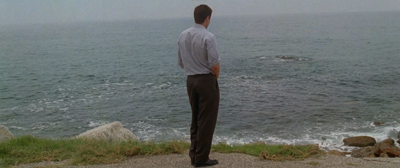




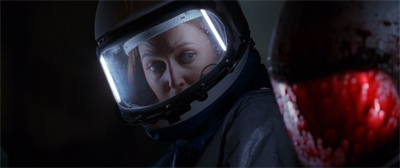
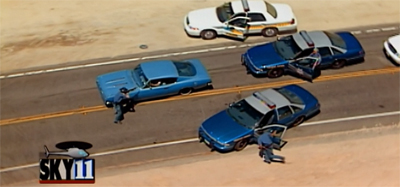
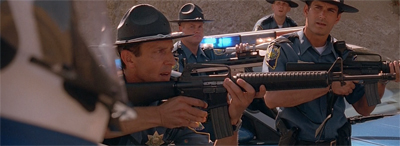
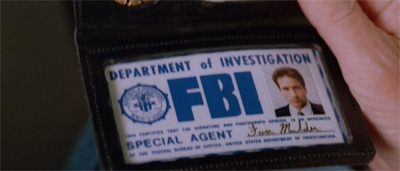
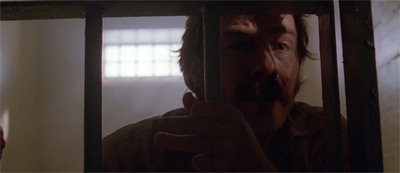
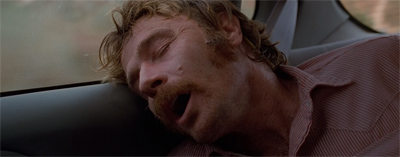
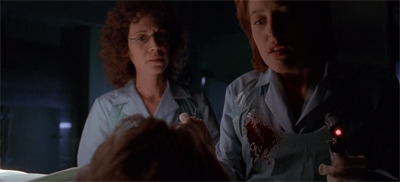
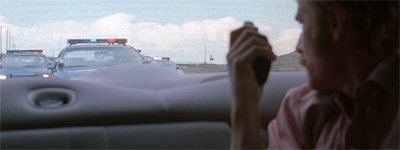
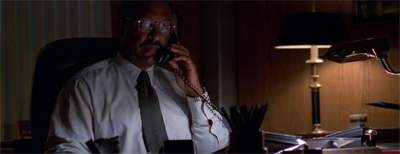
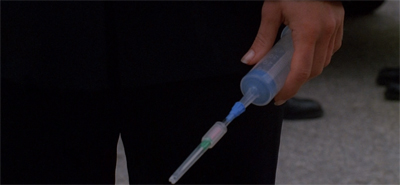
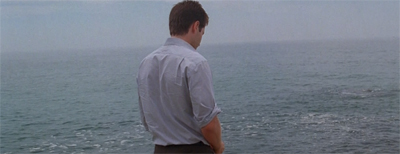
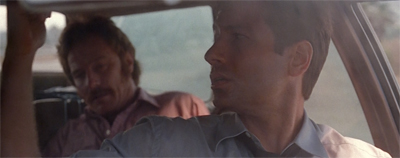
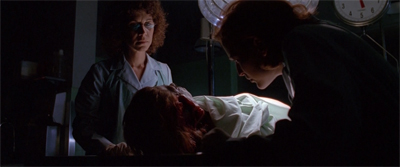
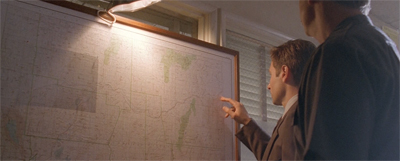

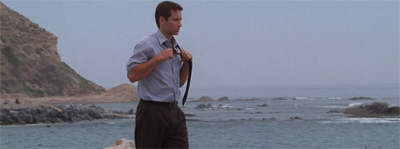
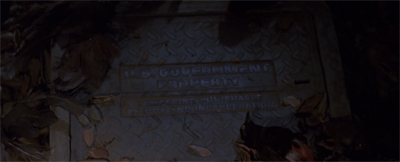

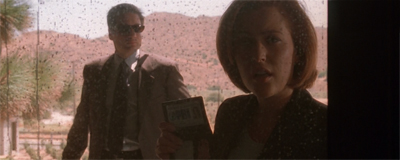
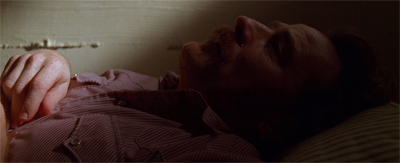
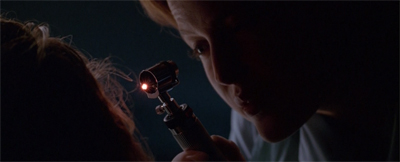
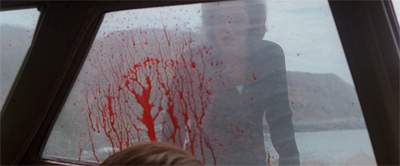
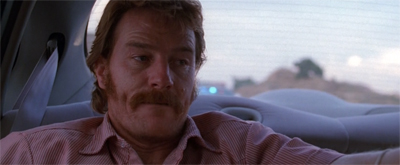

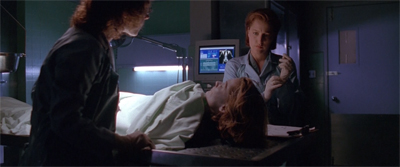





Leave a comment